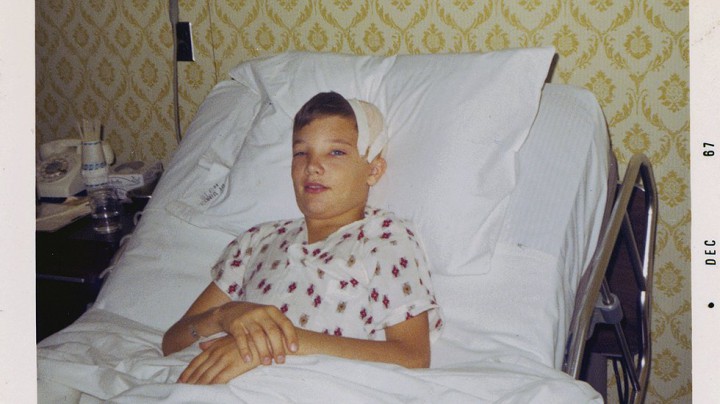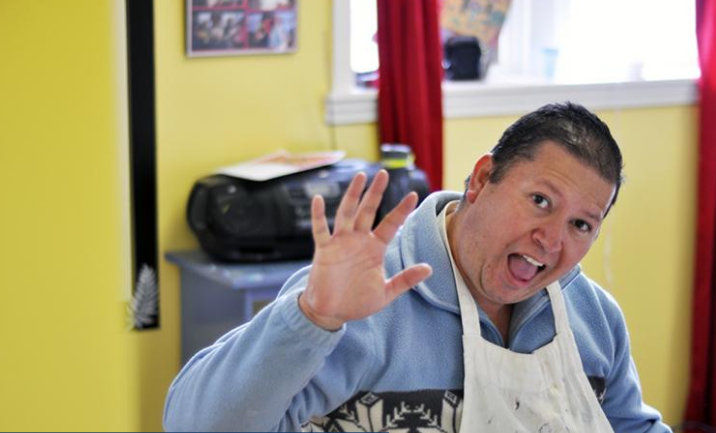Suppose you’ve just gone to the doctor, who has looked in your eyes and told you there’s a malignant tumor the size of a baseball inside your head — and that you probably have only a year left to live. Such a verdict is unfathomable to most of us, but it’s reality for 7 million people in the United States. Survival rates can run as low as 6 percent, depending on the size and location of the tumor, as well as limitations in health care coverage.
May is Brain Tumor Awareness Month, and on Thursday, May 19, the nonprofit Western North Carolina Brain Tumor Support will celebrate 15 years of helping patients and families. WNCBTS will also honor the life of its founder, George Plym, who passed away March 18.
Plym started the regional group in 2001 as a way to document and share his personal journey, as well as to invite others to do the same. He and the group’s more than 100 members passed along information, resources and laughter. He also published a regular blog. “When we get together, we’re not all sitting around crying, we’re having fun,” says Mark Bordeaux, WNCBTS member and a brain tumor survivor. “That’s what George wanted.”
A former baseball player and fan, Plym was also a guitarist. He rebuilt guitars for several years before he fell in love with photography in his last few years. “When George decided to do something, he was all in,” recalls friend, WNCBTS member and survivor Jose Cortes with a laugh.
Plym’s experience with brain tumors began when he was a boy almost 50 years ago. While playing baseball, he experienced double vision — two baseballs coming at him rather than one. Plym’s family rushed him to a doctor, who discovered pressure buildup in his optic nerve. The problem stemmed from a brain tumor the size of an orange. That growth would be the first of 14 tumors that took up residence in his brain over the course of Plym’s life.

After diagnosis and surgery in 1967, Plym was given two years to live. He had other plans, though. He moved to Miami to be near his cousin, where he received a second diagnosis just 10 years later. Once again, Plym persevered. He married his high school sweetheart, but just two days after the wedding, tumor No. 3, the size of an egg, put him back in the hospital.
Four years later, Plym recounted on his blog that a new tumor “made me realize that I am a fighter and completely changed my life.” The doctor told him that No. 4 couldn’t be removed without causing major damage, including paralysis, blindness and other possible disabilities. Plym found a doctor and neurosurgeon willing to risk surgery or attempt radiation as treatment.
“He had like 20 tumors or something and was told nearly every time that he wasn’t going to make it,” his friend and WNCBTS member Jose Cortes says. “Yet [Plym] was so positive despite all of that. He would always say, ‘Never worry for the things you cannot control.’ I’ll go to more meetings now to help keep his spirit alive.”
Cortes, a former art teacher, and his wife, Anne, met Plym after moving to Asheville from Greensboro, not long after Cortes received a diagnosis of anaplastic astrocytoma grade III brain tumor in both frontal lobes.
Anne Cortes, a breast cancer survivor, recalls finding the group and receiving a call from George, who invited them both to an upcoming picnic. “He brought this lightness to the brain cancer journey,” she recalls, tears welling in her eyes. “A brain tumor is a very isolating thing with few long-term survivors. To find the camaraderie and feel the comfort in our common struggle and to just meet and let go and be able to laugh is more than I can explain the value of.” (See “Remembering brain tumor fighter George Plym,” May 18, 2016. Xpress)
It wasn’t long before Jose and Plym were walking down the street to each other’s homes, and Jose was encouraging Plym to join him at the YMCA for the Live Strong program, where their pictures can still be found together adorning the walls.
WNCBTS helps patients and families get the support and information they need. There are more than 130 different types of brain tumors but no defining factor to help determine who is affected most. Of those diagnosed, roughly 57 percent have been women and 43 percent men; there’s only a slightly higher incidence among Caucasians, followed by African-Americans, then Latinos, according to the National Brain Tumor Society.
This year, 4,360 children younger than 15 will be diagnosed with either malignant or nonmalignant tumors. These numbers are exactly why the National Brain Tumor Society has dedicated May to Brain Tumor Action: National and regional groups are organizing local events to raise awareness and sharing statistics and information that will increase public involvement with state and federal legislation.
While survival rates vary depending on the type and location of the brain tumor, the most common and deadliest type, glioblastoma, has a 17 percent and lower survival rate, depending on the age of the person afflicted. “Statistically only a little over 10 percent of people diagnosed survive five years,” says Bordeaux.
“It’s hard to keep a group going with those numbers, yet family members and friends stay on, and those that do make it continue to come to the meetings. I’ve been blessed to have these people in my life, and I owe that to George [Plym]. It makes me realize it’s not about how long your life is, it’s about what you do while you’re living it.”
MORE INFO
WHAT: As part of Brain Tumor Awareness Month, WNCBTS will celebrate its upcoming 15-year anniversary and honor founder George Plym. Ray Riordan of the American Cancer Society Cancer Action Network, Inc. will share information regarding oral chemotherapy, the newest and most common form of treatment. Allison Brouillette from Wake Forest University Baptist Medical Center will also attend. Plym served on its Comprehensive Cancer Center Regional Advisory Board. The event is free and open to the public. Memorials/donations can be sent to 27 Greeleaf Circle, Asheville, NC, 28804.
WHEN: 6-8 p.m., Thursday, May 19
WHERE: Room 338 of Western Carolina University’s satellite location at 28 Schenck Parkway, Biltmore Park Town Square, south of Asheville.
WNC Brain Tumor Support meets from 6-7:45 p.m. on the third Thursday of each month at MAHEC, 121 Hendersonville Road, Asheville. http://www.wncbraintumor.org or Facebook




Before you comment
The comments section is here to provide a platform for civil dialogue on the issues we face together as a local community. Xpress is committed to offering this platform for all voices, but when the tone of the discussion gets nasty or strays off topic, we believe many people choose not to participate. Xpress editors are determined to moderate comments to ensure a constructive interchange is maintained. All comments judged not to be in keeping with the spirit of civil discourse will be removed and repeat violators will be banned. See here for our terms of service. Thank you for being part of this effort to promote respectful discussion.